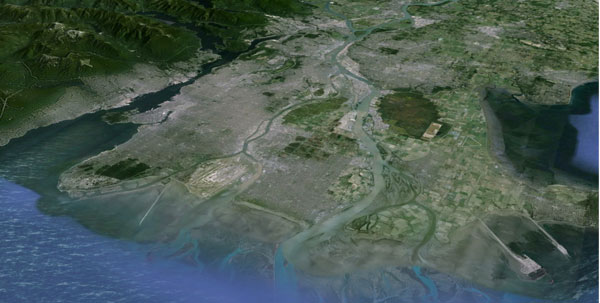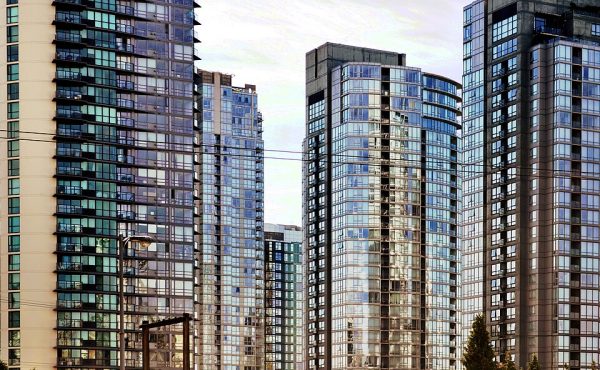
[EDITOR’S NOTE: We are please to offer our readers the conclusion to George Poulos’ in-depth series focusing on the Comprehensive Costs of Transportation and Metro Vancouver. If you missed past articles, you can read them here: Introduction, Part 1 – Costs and Benefits of Transportation in Vancouver (Part 1), Investing in Transit is Imperative for Metro Vancouver (Part 2), The Business Case for Active Transportation (Part 3), Transportation Equity and what it Means for Metro Vancouver (Part 4), and A New Tool for Cost-Benefit Analysis of Transportation Projects (Part 5).]
Planning for transportation needs is one the fundamental functions of modern societies. In Canada, governments at all levels face challenges in accommodating complex transportation needs while simultaneously promoting more sustainable transportation practices. These challenges are especially relevant at the Regional/Municipal level where the majority of day-to-day trips are made, and which also have the greatest potential for multimodal growth and uptake.
The Metro Vancouver Region has demonstrated a decided shift in the focus of transportation planning policies to prioritize transit and active transportation use. While there may be a general recognition among policy makers that opportunities exist to mitigate against the many deleterious outcomes that result from an over-reliance on motorized travel, the more comprehensive costs of transportation in the Metro Region (as elsewhere in Canada) remain poorly defined.
As the many pathways through which transportation affects individuals and society continue to be better understood (e.g. health, environmental, economic impacts), the need for more comprehensive estimates of transportation impacts will only continue to grow. These would be especially beneficial if they were presented as practical planning tools for governments and professionals to use in policy and decision-making processes. To this end, the focus of my analysis has sought to address this critical gap in the professional knowledge base in Canada.
If you’ve been following the series, no doubt you may have been surprised by many of the findings presented. Indeed, as discussed throughout the previous five articles, study results include many useful findings regarding transportation impacts that help to address many of the topical planning issues presently at play in the Metro Vancouver Region.
In the end, I’ve tried to provide a source of information which will inevitably become increasingly in demand by policy makers and practitioners. After all, it is the job of transportation professionals to continue to provide the best possible information and advocate for the best solutions. It’s my hope that this work contributes to this end.
***
Just in case you missed earlier pieces of The Comprehensive Costs of Transportation and Metro Vancouver
- Introduction
- Part 1 – Costs and Benefits of Transportation in Vancouver
- Part 2 – Investing in Transit is Imperative for Metro Vancouver
- Part 3 – The Business Case for Active Transportation
- Part 4 – Transportation Equity and what it Means for Metro Vancouver
- Part 5 – A New Tool for Cost-Benefit Analysis of Transportation Projects
**
George Poulos, EIT, MSCP is a transportation engineer-in-training as well as a recent Masters graduate of the School of Regional and Community Planning (SCARP) at UBC. He has previously worked for consulting engineers on a variety of transportation and municipal projects. Originally from Ontario, he currently lives in Vancouver.





2 comments
I am very impressed with this series. Is it too complex a topic, too lengthy a discourse, too long to be a good sound-bite, to be retweeted (or otherwise shared) by the thousands across Vancouver or the country?
Great writing style, well documented argument, necessary data driven narrative. It is funny that it takes and engineer to know, from the inside, the types of arguments necessary to sway the discussion.
Hi Cole,
I’m glad you liked the series.
I too agree that the points made in the series have significant bearing on transportation issues and in our political discourse. However, from a purely methodological perspective, you can run into a little bit of trouble reducing results from such analysis (even when they are delivered in numerical format) into stand alone tweets and sound bites.
Suffice to say that the methodology behind these results is very complex. As such, the results given must be placed within the appropriate context of the assumptions and limitations used to generated them. Not that I would discourage the dissemination of this work through the media. To the contrary, I think that many of the broad strokes and takeaways from this analysis can be effectively translated into workable and terse forms for media consumption (feel free to tweet away!). However, a loose quotation about dollar value or other number runs the risk of not capturing the intended and appropriate meaning of that figure – after all, these are not one size fits all results.
If we’re talking about spurring on what I see to be as necessary changes in the way we plan for transportation, studies and results such as these may be placed into other channels – magazines such as Spacing, scholarly/professional journals, think-tanks and research groups, and ultimately into professional practice.
However its run up the ladder, it’s very important that any specific result be understood as being part of a larger whole.
Cheers,
G